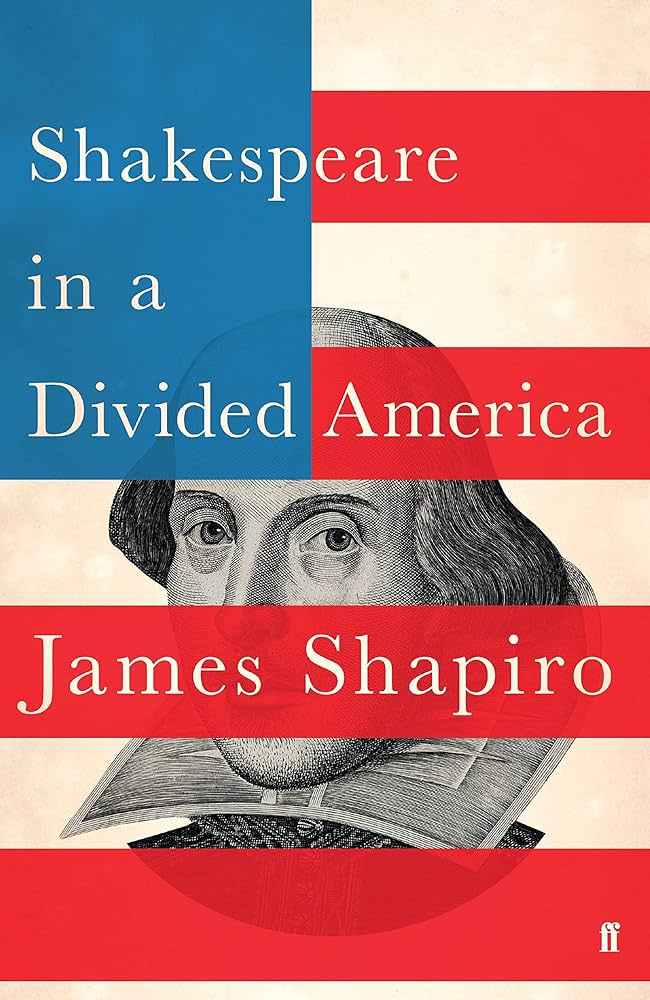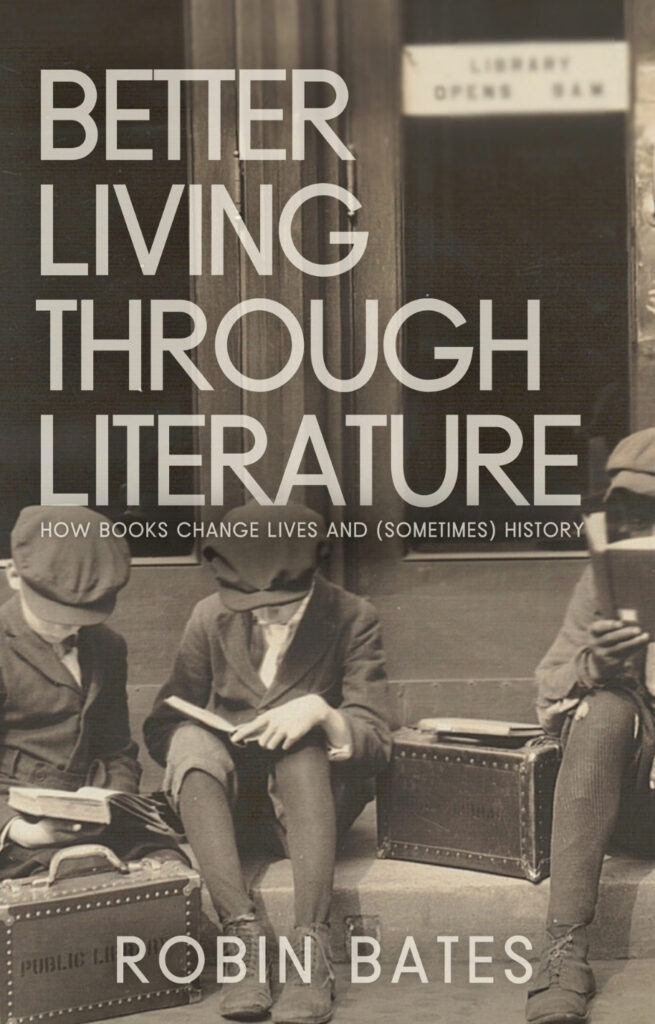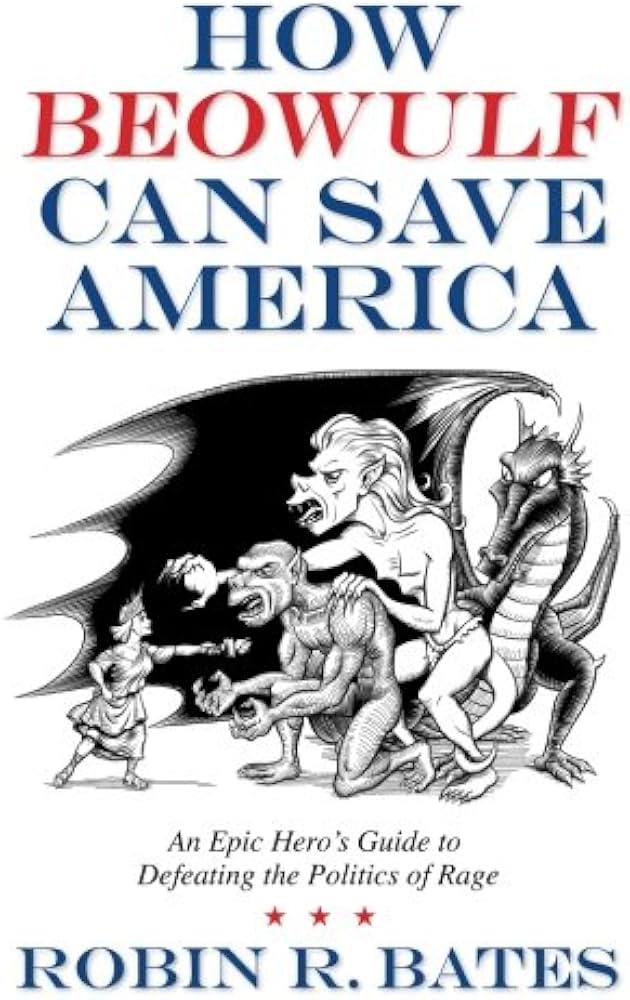Note: If you wish to receive, via e-mail, (1) my weekly newsletter or (2) daily copies of these posts, write to me at [email protected]. Comments may also be sent to this address. I promise not to share your e-mail with anyone. To unsubscribe, write here as well.
Thursday
I’ve just finished reading James Shapiro’s fascinating Shakespeare in a Divided America, a book that explores how people have relied on the plays at critical points in American history. “For well over two centuries,” Shapiro writes, “American of all stripes—presidents and activists, writers and soldiers—have…turned to Shakespeare’s works to give voice to what could not readily or otherwise be said.” The Bard, he notes, is one of the few areas where partisans have been able to find common ground—although that being said, they have used Shakespeare to advance widely divergent and often conflicting agendas.
To demonstrate how this has been the case, Shapiro focuses on seven moments in American history where historical players invoke Shakespeare’s plays:
–in 1833, Othello played a role in tensions between pro- and anti-slavery forces, especially when it came to characterizing and performing the protagonist. There were also unexpected responses: for instance, former president John Quincy Adams, even though he opposed slavery, was horrified by Desdemona’s passion for Othello and felt that she was asking for trouble when she married him. Miscegenation (or amalgamation, as they called it back then) was regarded as an abomination.
–in 1845, Othello also played a historical role but for reasons of gender more than race: forces sent to Corpus Christi, Texas to fight an expansionist war against Mexico were drawn to the play’s handling of infidelity, which was a concern of their own. In the army production, incidentally, the part of Desdemona was almost played by an effeminate-looking Ulysses S. Grant, who only later would grow the beard we see on the $50 dollar bill (perhaps to appear more masculine). From this mention of cross-dressing, Shapiro goes on to discuss how Shakespeare’s plays raised multiple gender issues at the time, especially Romeo and Juliet, where cross-dressing actresses would sometimes play the part of Romeo.
–in 1849, bloody class warfare was triggered by two competing versions of Hamlet: a British actor who portrayed an introspective Hamlet drew the fire of nativist, anti-British, and anti-elitist forces, who preferred the macho Hamlet of an American actor. The crowd attacked the Astor Theater when the play was being performed there, and it took the militia firing into the mob to disperse them.
–in 1865, a Shakespeare-loving Lincoln was assassinated by Shakespearean actor John Wilkes Booth. Whereas Booth identified with Brutus in Julius Caesar, Lincoln—in an eerie premonition of his death—saw himself in Duncan, murdered by Macbeth. Lincoln had a lifelong love for Shakespeare, could recite long passages by heart, and often debated with producers and actors about their artistic decisions. This love was acknowledged at his funeral, where Macbeth’s words about Duncan were read and were also used to comfort the grieving public:
Hath borne his faculties so meek, hath been
So clear in his great office, that his virtues
Will plead like angels, trumpet-tongued, against
The deep damnation of his taking-off.
–in 1916, Shakespeare became a symbol of Anglo-Saxon superiority and was used to push forward anti-immigrations laws and racial quotas, even though he himself—in his play Thomas More—had written passionately and empathetically on behalf of immigrants. (See my post here on the passage.)
–in 1948, Taming of the Shrew became popular, in part because returning veterans’ anxiety over the women who had taken over their jobs during the war. Shapiro goes into depth about the creation of the musical Kiss Me Kate, which found a way to thread the needle between outright misogyny and what the age regarded as strident feminism.
–in 1998, Shakespeare in Love won multiple Oscar because it managed to thread its own set of needles, these involving same-sex love and adultery. The question of whether Shakespeare has fallen in love with a man is suggested but quickly withdrawn in the movie, and he is also described as having been “banished” by his wife, thereby making his adultery acceptable. The film came out when the Bill Clinton-Monica Lewinsky affair was blowing up. And indeed Lewinsky used a passage from Romeo and Juliet, run in a Washington Post Valentine’s Day ad, to reconnect with Clinton. Addressed to “Handsome” and signed “M, the passage was Romeo’s declaration to Juliet that true lovers cannot be kept apart:
With love’s light wings did
I o’er perch these walls
For stony limits cannot hold love out
And what love can do that dares love attempt.
Lewinsky later reported that “the President said he had seen her Valentine’s Day message,” “talked about his fondness for Romeo and Juliet,” and gave her a book of poetry. After which history was made.
–Shapiro concludes his book, which was published during Trump’s second year in office, with an account of the Delacorte Central Park Theatre’s production of Julius Caesar. Because Julius Caesar was modeled on Trump. Trump supporters falsely claimed that audiences cheered when Caesar is murdered and took to threatening everyone connected with the production. Although the director thought that the production could lead to nuanced debates about how to respond to authoritarianism—after all, Brutus and Cassius’s belief that violence can be used to save democracy is proved to be spectacularly wrong—America isn’t doing nuance very well these days.
And because of this, Shapiro worries about the future of Shakespeare in America, which he says
is as precarious as it ever has been in this nation’s history. There has always been a tug-of-war over Shakespeare in America; what happened at the Delacorte suggests that this rope is now frayed. When one side no longer sees value in staging his plays, only a threat, things can unravel quickly.
Lest we think that Shapiro’s fears are overblown, he points out that the Puritans closed all British theatres only a few decades after Shakespeare had packed the Globe.
Shapiro’s historical examples challenge a premise that underlies both this blog and my book, which is that great literature is good for us. Can one really assert this confidently when Shakespeare is used to argue both for and against slavery, American imperialism, immigration, women’s rights, gay rights, etc. While I myself would argue that Shakespeare read rightly always expands the possibilities of human liberation—and that the devil can cite the Bard as well as Scripture to his purpose (to quote from Merchant of Venice)—it is unsettling to see Shakespeare’s Brutus as the inspiration for the assassination of Lincoln. For that matter, the depiction of Shylock (so Harold Bloom believes) has done more damage to Jews than the noxious Protocols of the Elders of Zion, used to justify the Holocaust.
In any event, Shapiro confirms another point that I make regularly: that in the toolkit we need for dealing with life, Shakespeare is a necessary accessory. One is just never sure how the tools will be used.


